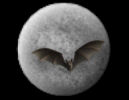|
Buddhist gods are only the the functions of Mystic LAw once a person is having a strong faith. You know they are not what u have seen Like In Hinduism having many gods in which they worship them. Buddhim it's not, but rather they are our friends and comrades in faith in battling against the devilish nature within our Life and guide and to protect us from our endeavors.They can be animals, people, our freinds, tress and to all our natural surroundings. Buddism call this power " good fortune ".
THe purpose of Buddhist practice is to achieve enlightenment or supreme happiness along with the establishment of a peacul and prosperous society based the on the absolute dignity in life. Essentially, that includes from spiritual to material aspects in Life because Buddhism teaching us that all realms are all essential to happiness.
Life as taught in Buddhism teaching us the principle that Life is eternal-that is life is continuing and endless process in the cycles of life and death. The pervasiveness of ESSENTIAL LIFE in all things lead to the awareness of its eternity. The greates obstcle in the way of accepting the eternity of life is the enivitability of death. But if one accepts the transition from latent life to maifest life- that is sentient to insentient- one mst also accept the transition from sentient to insentient. Death is the point at which life returns to a latent state.
An interesting approach to the subject of life beyond death is seen in a book entitled "what happens To Man after Death" by Dr. Kijiro Okabe, prefessor emeritus of Osaka University. Being physicist, Dr. Okabe employs a method he describe as "scientific sleuthing" which means in effect drawing inferences from known scientific fact to the nature of the unknown and the unknowable.For a man basing himself on the laws of physics, Dr Okabe comes remarkably close to Buddhism in his conclusions concerning life and death.
The key element in Dr Okabe's argument is the principle conservation of energy.This fundamental principle of modern science states that energy, although it may be converted into other forms of energy, either dynamic or potential.For example, the electric energy supplied to a light bulb is not dissipated; it is transformed into an equivalent amount of optical and thermal energy. Dynamic energy can result only from transformation of an amount of potential energy and vice versa. Energy ,in short, cannot be either created or destroyed. since matter can be expressed in tems of energy, there also exist a law of the conservation of matter.
Dr Okabe reason that a similar principle must apply to life, which is a form of existence and ought logically to be subject to the universal laws of physics. This seems to me an understandable position: if living beings are seen as energy complexes, then this energy must be composed of physical and spiritual energy.
Dr Okabe introduces a concept he calls the " core of the soul" . Our life, says Dr. Okabe, is the active state of the core of the soul, while death is its passive state. Active refers to the visible manifestation of life: movements of the limbs, functioning of the brain, the expression of the emotions. With death, these life functions enter a latent or dormant state phase. Superficially, they appear to have ceased to exist, but in reality they retain their life potential. Dr Okabe believes the nucleus of existence, in response to surrounding circumstances, travels back and forth between the active state and the passive states, that is, life and death.
Though Dr. Okabe arrive at his extrapolation feom the laws of physics, his conclusions are very close to the Buddhist philosophy of the Eternity of Life of the 3 existences of life of the past, present and future in an endless cylcle of birth or life and death.(see also my previous post on Eternity of Life)
We may liken to the rain falling outside the window. Having fallen, the rain either seeps into the ground or flows into rivulets, then larger streams, which empty into rivers, and eventually the rainwater finds its way to ocean. From the oceans surface, water rises in the form of vapor and is corporated into clouds, from which it once again falls to earth as rain. The water from the rainfall is liquid part of the time and vapor part of the time, but its chemical structure remains unaltered throughout the hydrological cycle.
Life and Death are like the physical form of the rain. Water is liquid and visible; vapor is a gas that is often visisble. But both consist of molecules contaning 2 hydrogen atoms and 1 oxygen atom. In the same way, life and death are but two aspects of the same fundamental existence, which moves from one state to the other and back again in endless cycles.
By combining physics with an original line of reasoning, Dr Okabe peered deeply into the nature of life in its incessant transformations through the past, present and future. The shakyamuni Buddha(the enlightened One), by means of religious insight rather than scientific induction, dicovered not only the true nature of Life and death, but also all the laws governing the workings of life and the cosmos.
|



